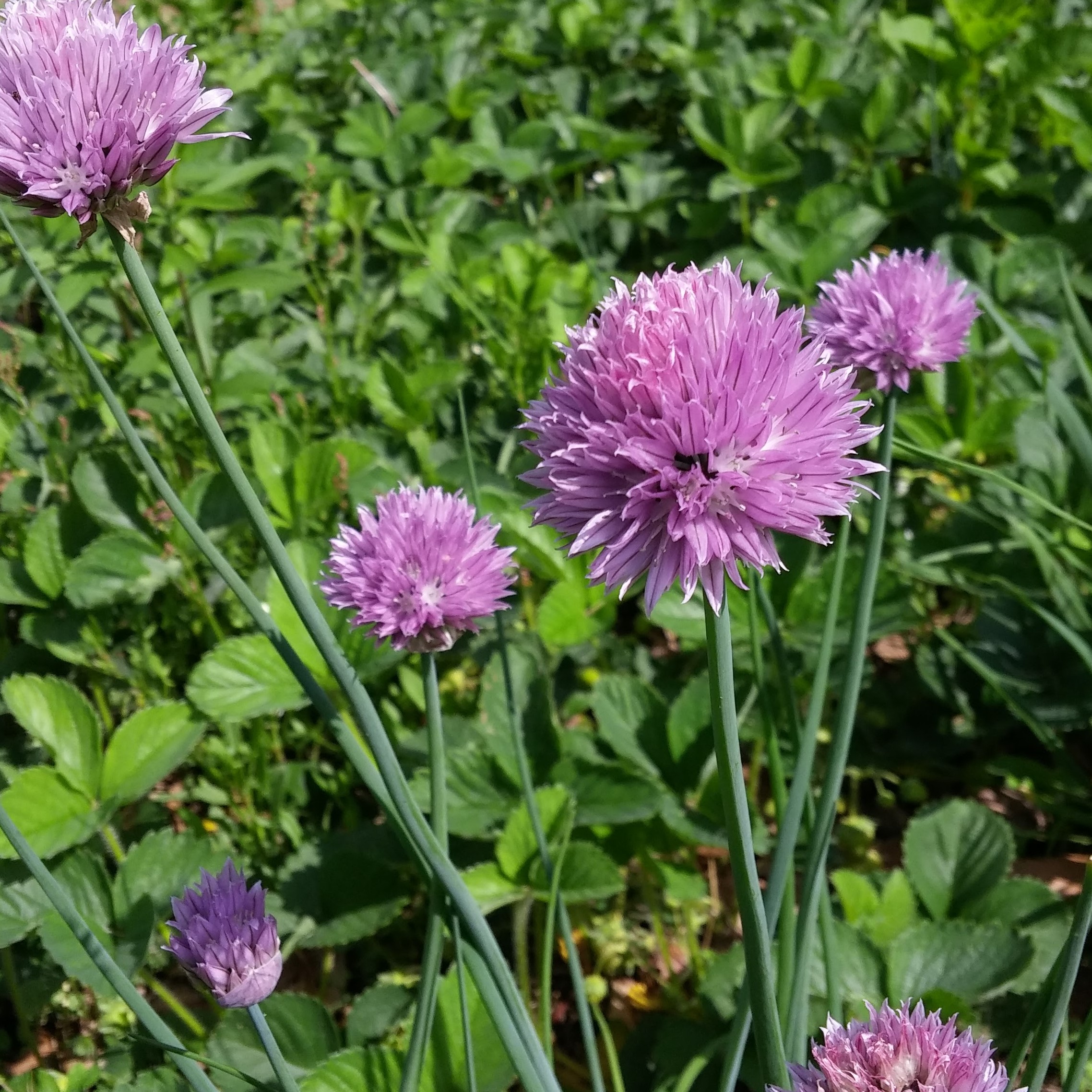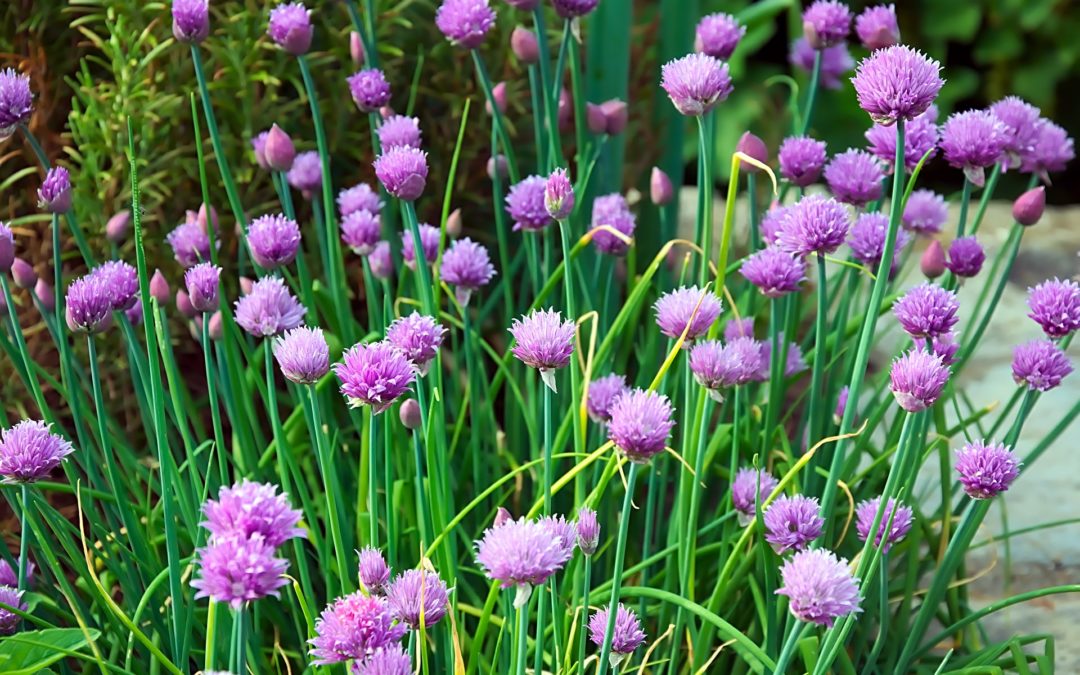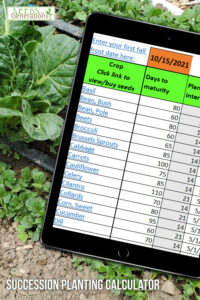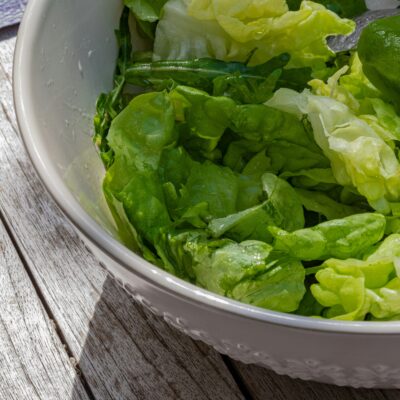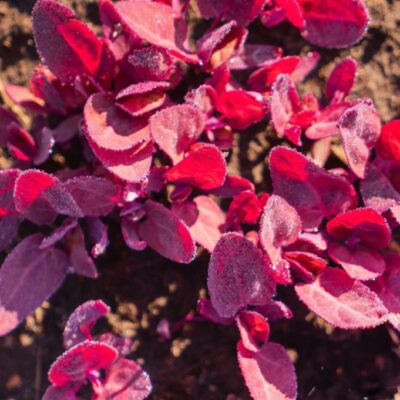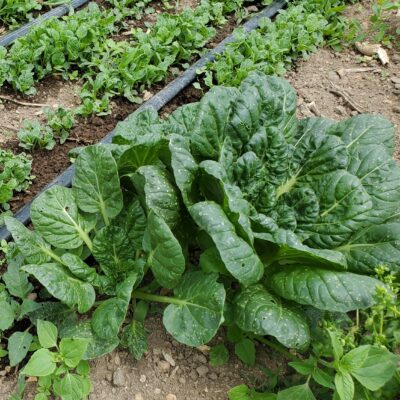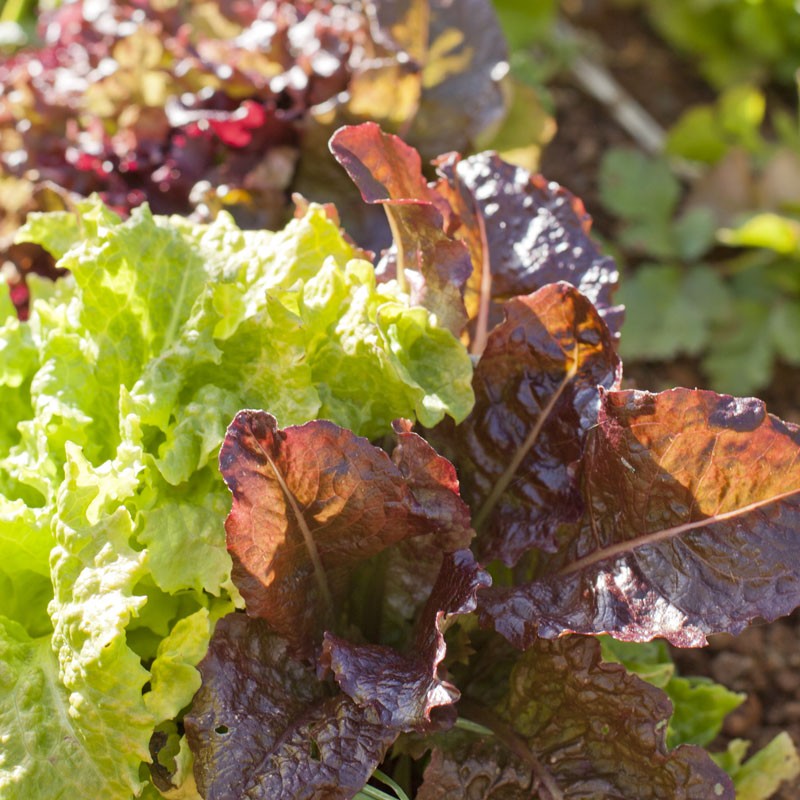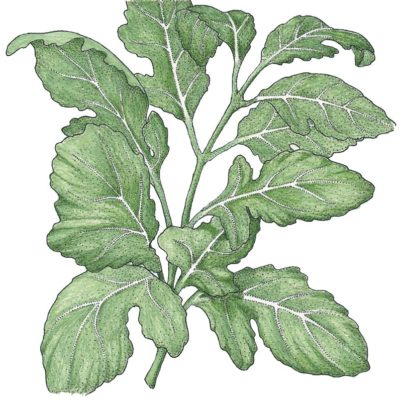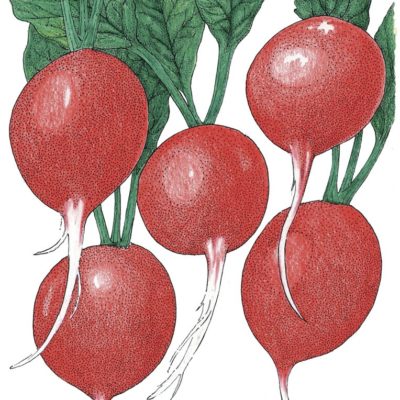Disclosure: The links in this post may be affiliate links. If you purchase any products after clicking on these links, at no additional cost to you, Seeds for Generations may receive a small commission for making you aware of these important resources.
If you just looked at chive’s pretty flowers and didn’t know what kind of plant it was, you might not realize that you’re looking at a kind of onion! In this post, we’re going to talk about how to grow and use chives, a plant with a mild flavor and multiple uses.
Common Chives
Allium schoenoprasum, Amaryllidaceae family
Chive leaves have an onion flavor that’s much more delicate and mild than regular onion. (Think of it as a green onion, though not as a strong.) The chive plant grows throughout the spring and summer, and you can continue snipping off the round, hollow leaves and using them throughout the year. Chives grow in a clump, reaching heights of 12 inches and growing back year after year.
As the weather grows warmer, chives produce beautiful purple flowers that attract bees. Like the flowers found on related plants, these flowers are actually clumps of many smaller flowers. While the chive leaves are most commonly used once they reach maturity, the flowers are also edible, yielding a similar flavor to the leaves.

Using Fresh Chives
While regular white or yellow onions hold up to cooking and other, more robust flavors, chives are more delicate. The leaves are most commonly used in dishes like creamy sauces and soups, usually added at the end of cooking to preserve flavor. Chives pair well with flavors like milk, cheese, eggs, poultry, potatoes, parsley, and dill.[i]

Preserving Chives
Because they’re so delicate, chives aren’t as easy to preserve as other herbs like basil or dill. But just because it’s difficult doesn’t mean it’s impossible!
Freezing Chive Leaves
Wash and dry chives, chop them in fine pieces, and freeze. Learn how in this article and this article.
Preserving Chive Flowers
Preserve the flowers in vinegar to create a delicious, pretty chive vinegar.
Drying Chives
This is the tough part. Unlike many other herbs, chives are extremely difficult to dry. They usually turn brow (almost “woody,” as one author called it) and lose their flavor.
If you have a lot of fresh chives, however, it wouldn’t hurt to try dehydrating them slowly using sunshine or a very low dehydrator setting. (Freezing is still the best method.)

How to Grow Chives
Chives like a loose, well-drained soil that’s rich in organic matter. They also like full sunshine and even, but moderate water while establishing themselves. They don’t grow very fast at first, and you may not get a harvest the first season. But once the chives establish themselves, these perennial plants will last for years to come!
Start chive seeds indoors 4-6 weeks before the last frost or sow directly in soil that’s at least 55 degrees F. For an indoor supply during the winter, plant chives in a pot so that you can move them indoors and harvest chives whenever needed.
As for chive’s relationship with other crops, plant chives next to carrots and tomatoes. Because they’re an onion-like plant, chives also deter pests like Japanese beetles, cucumber beetles, aphids, and slugs, as well as plant diseases like black spot on roses. (Realize that growing chives next to peas and beans isn’t recommended, due to their antagonistic relationship.) The tea is also used on plants that have mildew.[ii]
Conclusion – How to Grow and Use Chives
They have a delicate onion flavor, but common chives are delicious in the right meals. They’re also one of the best kitchen herbs, since they grow throughout the season, producing prolifically once established. Now that you know how to grow and use chives, go plant some!
